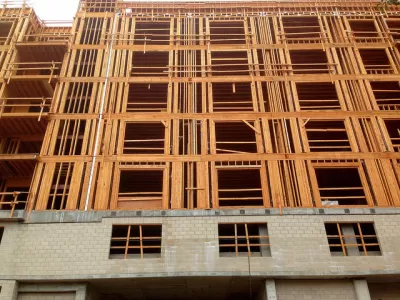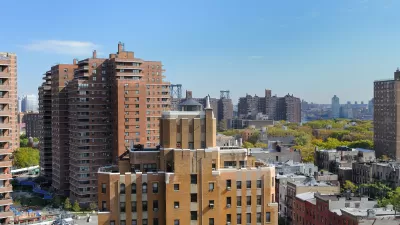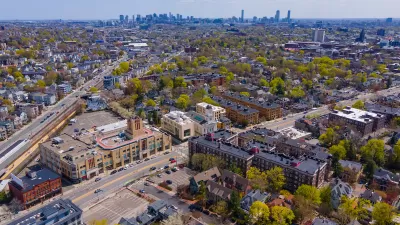Development impact fees in California triple the national average. A bill in the State Legislature would reform the state's development fees, as one measure in an effort to build more housing in the state.

A new study recommends reform for impact fees as a necessary step in response to the housing shortage and housing affordability crisis in California, according to an article by Louis Hansen.
The report [pdf], created by the Terner Center for Housing Innovation at the University of California, Berkeley and published on August 5, 2019 by the state Department of Housing and Community Development, will inform state legislators expected to debate the state's development fees.
"Cities depend on impact fees to build roads, schools and maintain parks and water systems," according to Hansen. "The money also allows municipalities to recoup costs for staff time spent on the projects. In an earlier study, Terner Center researchers found impact fees increased the cost of new units in some cities by up to 18 percent. California’s fees were nearly triple the national average."
"The report also recognized that California cities, limited in raising property taxes by Prop 13, lean heavily on impact fees to pay for services and upgrades to roads and utilities."
Assemblymember Tim Grayson, D-Concord, "plans to amend a bill on impact fee reform, AB 1484, to include recommendations from the report." The bill is on a tight schedule, according to the article—it has to get to Governor Gavin Newsom's desk by September.
Liam Dillon provides additional coverage of the report.
FULL STORY: California housing crisis: Development fees unpredictable, stifle construction

Planetizen Federal Action Tracker
A weekly monitor of how Trump’s orders and actions are impacting planners and planning in America.

Restaurant Patios Were a Pandemic Win — Why Were They so Hard to Keep?
Social distancing requirements and changes in travel patterns prompted cities to pilot new uses for street and sidewalk space. Then it got complicated.

Map: Where Senate Republicans Want to Sell Your Public Lands
For public land advocates, the Senate Republicans’ proposal to sell millions of acres of public land in the West is “the biggest fight of their careers.”

Maui's Vacation Rental Debate Turns Ugly
Verbal attacks, misinformation campaigns and fistfights plague a high-stakes debate to convert thousands of vacation rentals into long-term housing.

San Francisco Suspends Traffic Calming Amidst Record Deaths
Citing “a challenging fiscal landscape,” the city will cease the program on the heels of 42 traffic deaths, including 24 pedestrians.

California Homeless Arrests, Citations Spike After Ruling
An investigation reveals that anti-homeless actions increased up to 500% after Grants Pass v. Johnson — even in cities claiming no policy change.
Urban Design for Planners 1: Software Tools
This six-course series explores essential urban design concepts using open source software and equips planners with the tools they need to participate fully in the urban design process.
Planning for Universal Design
Learn the tools for implementing Universal Design in planning regulations.
Heyer Gruel & Associates PA
JM Goldson LLC
Custer County Colorado
City of Camden Redevelopment Agency
City of Astoria
Transportation Research & Education Center (TREC) at Portland State University
Camden Redevelopment Agency
City of Claremont
Municipality of Princeton (NJ)





























